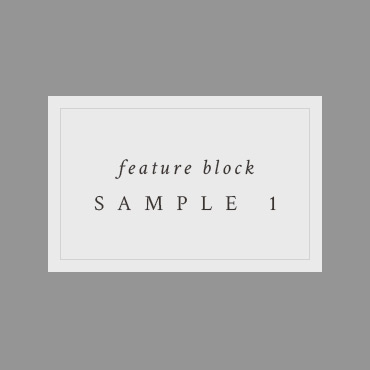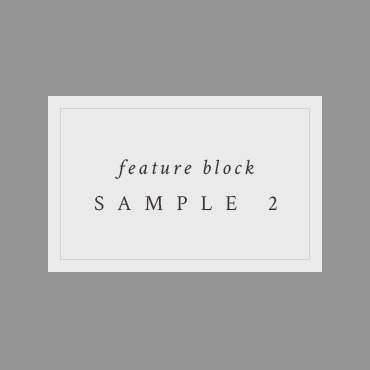CBD oil is becoming increasingly popular as a remedy for many physical and mental health issues. Many people are now turning to CBD oil as a natural and organic alternative to traditional medications. However, extracting CBD oil from hemp can be a daunting task. In this article, we will provide a step-by-step guide to help you extract CBD oil from hemp in the most efficient and safe way possible. We will cover the different methods of extraction and provide you with tips for achieving the highest quality CBD oil. Follow these steps and you’ll be on your way to creating your own CBD oil in no time.
How long does the extraction process take?
The extraction process of CBD oil from hemp can take anywhere from several hours to a few days depending on the method and the quality of the hemp. The most common extraction methods include supercritical CO2 extraction, ethanol extraction, or distillation. Each of these extraction methods have their own unique process and timeline.
What type of equipment is needed to extract CBD oil from hemp?
To extract CBD oil from hemp, you will need special equipment such as an extraction machine, a heat source (such as a hot water bath), and a collection vessel for the oil. You will also need hemp biomass, a filter, and an evaporator to extract the oil. A chemical solvent, such as ethanol or CO2, may also be needed to separate the oil from the plant matter.
What solvents are used to extract CBD oil from hemp?
Common solvents used to extract CBD oil from hemp include supercritical carbon dioxide (CO2), ethanol, and hydrocarbons such as butane and propane. Each of these solvents has its own advantages and disadvantages, so it is important to evaluate them carefully before making a selection.
What are the steps involved in the extraction of CBD oil from hemp?
1. Separate the stalks and leaves of the hemp plant from the flowers and buds.
2. Place the hemp flowers and buds in a container and cover them with a solvent, such as ethanol, to extract the cannabinoids.
3. Filter the mixture to separate the solvent from the hemp extract.
4. Use a separate container and a different solvent, such as CO2, to further separate the cannabinoids from the hemp extract.
5. Heat the mixture to evaporate the solvent, leaving behind only CBD oil.
How do you ensure the CBD oil extracted from hemp is of high quality?
To ensure the CBD oil extracted from hemp is of high quality, it is important to use a reliable extraction process such as supercritical CO2 extraction. This method is considered to be the safest and most efficient way to extract CBD oil from hemp. Additionally, it is important to source the hemp from a reputable supplier with organic certification and to use third-party testing to verify the quality of the product.
What percentage of CBD is in hemp?
The exact percentage of CBD in hemp will vary depending on the variety and growing conditions of the hemp plant. Generally, hemp plants contain low levels of CBD, usually between 0.3-1.5%. To extract CBD oil from hemp, the plant material is often heated and put through an extraction process. This process can be done with a variety of solvents but the most common is carbon dioxide. The oil is then collected and further processed to isolate the CBD.
Is Growing hemp for CBD oil profitable?
Extracting CBD oil from hemp is a relatively simple process. The most common method is to use an extraction process involving CO2 or ethanol. The first step is to grind the hemp into a fine powder, then it is placed into a chamber that uses a solvent to extract the CBD. The oil is then filtered and refined to remove any plant matter and other impurities. The resulting CBD oil can be used in products such as tinctures, topicals, edibles, and vapes. Growing hemp for CBD oil can be profitable, depending on the quality of the hemp, the cost of production, and the demand for the product.
Can CBD be extracted from hemp seed?
Yes, CBD can be extracted from hemp seed. The most common method of extraction is by using either a solvent or CO2 extraction process. In solvent extraction, the hemp seed is soaked in a solvent such as ethanol, which strips the plant of its cannabinoids, terpenes, and other oils. In CO2 extraction, carbon dioxide is used to extract the oils from the hemp seed. Both methods are effective in extracting CBD oil from hemp.
How much CBD oil can be extracted from a hemp plant?
The amount of CBD oil that can be extracted from a hemp plant depends on several factors, such as the strain, growing conditions, and the extraction method used. Generally, a pound of dried hemp plant material can yield about 1 to 2 ounces of CBD oil. When using a solvent extraction method, the yield can be higher. The amount of CBD oil extracted from a hemp plant can also be increased by using a supercritical CO2 extraction process, which can yield up to 4 ounces of CBD oil per pound of hemp plant material.
What part of hemp is used for CBD oil?
To extract CBD oil from hemp, the plant is first harvested to obtain hemp flowers and leaves. The plant material is then dried and ground into a fine powder. This powder is then placed into a extraction vessel, such as a closed-loop system, where a solvent such as CO2 or ethanol is used to isolate the CBD from the plant material. The isolated CBD is then further refined to produce a pure CBD oil.
Can I make and sell my own CBD products?
Yes, you can make and sell your own CBD products with the right extraction process. To extract CBD oil from hemp, you need to use a CO2-based extraction method. This involves extracting the CBD with carbon dioxide, which is a safe and effective method. It requires specialized equipment and a lot of knowledge, so it is best to work with a qualified extraction technician.
How do you process hemp by hand?
To extract CBD oil from hemp by hand, first the hemp must be harvested and dried. Then, the hemp should be decarboxylated in order to activate the CBD. After the CBD has been activated, it can be extracted from the hemp using a solvent such as ethanol or olive oil. Once the extract has been collected, it can be filtered to remove any impurities, and then it is ready for use.
What is the safest way to extract CBD?
The safest and most reliable way to extract CBD from hemp is to use a CO2-based extraction process. This method is considered the safest because it uses pressurized carbon dioxide to extract the CBD, which is then filtered and distilled. This process is more efficient and minimizes the risk of contamination, while also preserving the quality of the oil.
Can CBD be derived from hemp?
Yes, CBD can be derived from hemp. To extract CBD oil from hemp, it must be processed through a series of steps such as extraction, distillation, and then refining. The extraction process utilizes a solvent such as carbon dioxide or ethanol to separate the CBD from the plant material. Distillation is then used to purify the CBD and refine it into an oil-like substance.
Copyright by Skyhorse Publishing, Inc. Cannabidiol CBD , an extract that many use as an anti-anxiety or relaxation tool, comes from the Cannabis sativa plant and cannot be divorced from this original source. Cannabis sativa has many different variations, and not all of these contain significant amounts of CBD. Prior to the gradual ending of cannabis prohibition in many locales, CBD was practically eliminated from the commercial black market to maximize profitability of the psychoactive cannabinoid content of the plants through selective breeding, according to many of the black-market growers I have spoken with throughout the years. The reason CBD is now widely accessible is most assuredly due to the change in social perceptions of this once-outlawed plant and the legalization of this plant in many locales. Without cannabis legalization, CBD would be difficult to acquireand there would be no testing to ensure that consumers receive the product they are paying for. In the process of developing recipes, I spent much of my time talking to CBD farmers and exploring their lush farms. Beforehand, my experience with these plants had been limited to small indoor grows and the product offerings of our legal cannabis dispensaries. New strains of CBD-rich cannabis are being developed for the legal market all the time. This list is by no means complete in terms of CBD-rich cannabis strains available. Hemp, the low-to-no THC variety of Cannabis sativa grown for the oilseed and fiber it produces, can also produce CBD in varying amounts. Both wild hemp and cultivated hemp can produce CBD in their resins. No matter what variety of Cannabis sativa produces CBD, the molecule is always the same. I believe that quality, whole-plant infusions and extractions matter. Epidiolex, the FDA-approved drug, is a whole-plant extract of CBD, purified, standardized, and manufactured for consistency. Whether you are in need of a pharmaceutical treatment or are using CBD as a home remedy or for pleasure, you should be using whole-plant infusions and extractions. The cannabis farmers I spoke with have expressed a similar belief. I am often asked about which brands of CBD are the best and which products to choose. But the truth is that when it comes to CBD, brands do not matter. Farms and plants matter. Selecting quality CBD-rich cannabis plant products begins with the farm they are grown on. Before you purchase any CBD product, know the farm and farmer. This is an easy task in most of our state-legal cannabis dispensaries, as this information will be readily available and even used as a marketing tool. This information is harder to find if you are purchasing CBD products from the over-the-counter herbal supplement market. CBD products sold over the counter in the mainstream herbal supplement market do not have the oversight and regulated testing that most of our state-legal dispensary systems have. If you choose to purchase CBD products in the herbal supplement market, you must rely on the information they provide to you in terms of acquisition of plant material and test results. You must also be aware that there is controversy both legal and scientific surrounding the purchase of CBD products over the counter through the mainstream herbal supplement marketplace. Test results matter. The herbal supplement marketplace is largely unregulated and a bit like the Wild West. As well, CBD supplement merchants in the over-the-counter herbal supplement market have been cited by the FDA for many violations around the labeling and distribution of their products. Certainly, I am not saying that all herbal supplement products are bad. What I am saying is that it is a wise decision as a consumer to seek out information and verify it if you are purchasing supplement products of any kind. And you should also be aware that not all locales will regard the purchase of CBD products as a legal activity. The functionality of this book is to show you how to seek, find, and enjoy CBD-rich cannabis. Facts and aesthetics both matter if what you seek is a quality product and a satisfying experience. In the recipes that follow, the focus is on whole-plant CBD-rich cannabis extractions and infusions, as these high-quality, artisanal, and farmer-centric whole plants and whole-plant resins will unfold themselves with fragrant and delicious complexity in your kitchen. My wish is for you to enjoy and benefit from everything CBD-rich cannabis offers without missing anything. If you have concerns about what is best for you, this is something you should discuss with your personal physician. There are also MDs and DOs who specialize in cannabis therapeutics who can guide you based on your current health situation. Can you verify these results independent of a company, merchant, or legal dispensary? Cannabis is a powerful soil remediator and easily absorbs toxic chemicals from the soil it is grown in.









